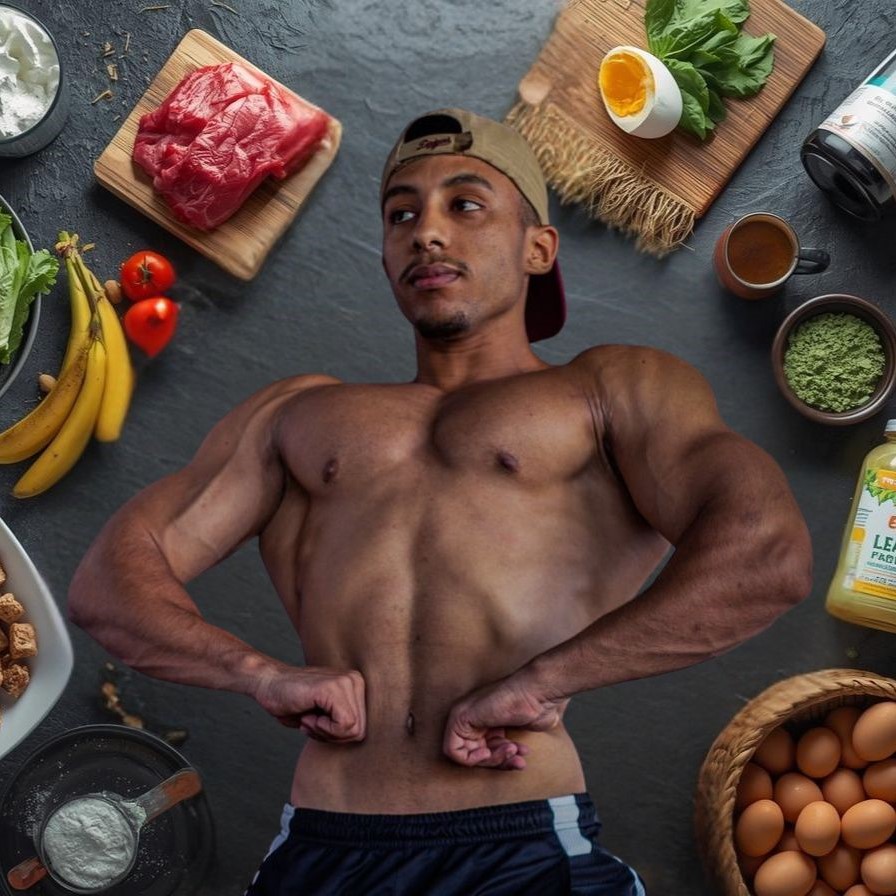Protein is the foundation of fitness success. Whether you want to shed stubborn fat or pack on muscle, the right protein strategy changes everything. This guide breaks down protein for weight loss vs muscle gain using research, expert experience, and practical gym-tested advice.

Table of Contents
Why Protein Matters for Weight Loss and Muscle Gain
The Role of Protein in Fat Loss
Protein plays a unique role in weight management. Unlike carbs and fats, protein requires more energy to digest, increasing calorie burn through the thermic effect of food (TEF). Studies show protein-rich diets can boost metabolism by 80–100 calories daily.
Another key benefit is satiety. Protein keeps you fuller longer, helping you naturally reduce overall calorie intake. That’s why lean protein for cutting is essential—chicken, turkey, fish, and plant-based options reduce fat without unnecessary calories.
The Role of Protein in Muscle Growth
Muscle growth relies on muscle protein synthesis (MPS). Amino acids from protein act as raw materials for building new muscle tissue. Without enough protein, training intensity won’t matter—your body cannot grow.
Protein timing also matters. Consuming protein within the post-workout recovery window accelerates MPS. That’s why protein for bulking emphasizes frequent, high-quality protein feedings throughout the day.
Protein for Weight Loss – Cutting Phase
Best Protein Sources for Fat Loss
When cutting, you want protein sources that deliver high satiety with fewer calories. Examples include:
- Skinless chicken breast
- White fish like cod and tilapia
- Greek yogurt and cottage cheese
- Lentils, beans, and tempeh

Supplements also help. The best protein powder for weight loss is one with high protein, low carbs, and minimal fats. Whey isolate, casein, and plant-based powders work well. For convenience, protein shakes for fat loss can replace higher-calorie snacks.
Protein Timing for Fat Loss
Timing enhances fat loss when paired with proper calorie control. Morning protein shakes can prevent cravings throughout the day. Evening casein helps reduce late-night hunger.
For women specifically, when to drink protein shakes for weight loss often depends on lifestyle. A morning shake supports appetite control, while a post-dinner shake aids recovery and satiety.
Protein for Muscle Gain – Bulking Phase
Best Protein Sources for Bulking
When bulking, the goal shifts from calorie restriction to surplus. Protein sources should be calorie-dense and nutrient-rich:
- Red meat and whole milk
- Whole eggs and salmon
- Peanut butter and nuts
- Mass-gainer shakes
Here, protein for bulking must pair with carbs and fats to maximize growth. Whey protein is the gold standard, but plant proteins also build muscle (see Whey vs Plant Protein).
Protein Timing for Muscle Growth
The best time to consume protein for muscle gain is before and after training. A whey shake 30 minutes post-workout boosts recovery. Casein before bed maintains MPS overnight.
As explained in Protein Timing and Recovery, consistency is more important than chasing exact “anabolic windows.”

How Much Protein Do You Really Need?
Protein Intake for Weight Loss
Protein needs increase during weight loss to preserve lean mass. Research suggests 1.6–2.2 g per kilogram of body weight daily. For a 70kg person, that equals 110–150 grams of protein per day.
This intake ensures fat loss while preventing muscle breakdown. That’s why how much protein to maintain muscle during weight loss is always higher than general health recommendations.
Protein Intake for Muscle Gain
Muscle growth requires slightly more protein than weight maintenance. Aim for 1.8–2.4 g per kilogram of body weight.
A protein to build muscle calculator can estimate daily needs based on bodyweight, training intensity, and goals. To fine-tune your intake, see How Much Protein Do You Need?.
Protein for Men vs Women
Special Considerations for Women
Women often ask how to build muscle and lose fat at the same time. The answer is recomposition—achieved with strength training, high-protein intake, and a slight calorie deficit.
For fat loss, how to lose belly fat and gain muscle (female-specific) relies on consistency in diet and training. Protein shakes provide an easy way to hit daily targets without excess calories. Learn more in Protein Supplements for Women vs Men.
Special Considerations for Men
Men usually need more calories and protein due to higher muscle mass. Testosterone also enhances MPS, meaning higher protein intake directly translates into more muscle gains. Bulking phases often include calorie-dense protein sources like beef, eggs, and mass-gainer shakes.
Myths and Misconceptions About Protein
Common Protein Myths
- “Too much protein damages kidneys”: Research shows healthy individuals face no kidney damage from higher protein intakes.
- “Protein is only for bodybuilders”: Every active person benefits from protein.
- “Supplements are better than food”: Supplements are convenient, but whole food is still king.
For a full breakdown, read Protein Myths Debunked.
Misconceptions Between Weight Loss vs Muscle Gain
One common misconception is that protein timing doesn’t matter. In reality, spreading protein across meals improves muscle retention and growth. Another myth: high protein is only for bulking. Science proves it’s equally important for fat loss.
For detailed comparisons, check Best High Protein Foods vs Supplements.
Protein in Different Diets
Protein in Vegan, Keto, and Other Diets
Different diets demand different protein approaches. Vegan diets rely on beans, lentils, tofu, and plant-based powders. Keto diets emphasize eggs, fatty fish, and meat.
Struggling to balance macros? See Protein for Different Diets: Vegan, Keto, etc..
Reading Protein Supplement Labels
Many powders look similar, but the differences matter. Always check:
- Protein grams per scoop
- Amino acid profile
- Added sugars or fillers
For practical tips, read How to Read Protein Supplement Labels.
Practical Meal Planning with Protein
7-Day Meal Plan for Muscle Gain and Fat Loss
Here’s a sample protein-focused day:
| Meal | Protein Source | Approx. Protein (g) |
|---|---|---|
| Breakfast | 3 eggs + 1 cup Greek yogurt | 40g |
| Lunch | Chicken breast + rice + vegetables | 45g |
| Snack | Protein shake (whey isolate) | 25g |
| Dinner | Salmon + sweet potato + broccoli | 50g |
Balancing Protein with Carbs and Fats
Protein isn’t everything. Carbs fuel workouts, and fats regulate hormones. The ideal macro split for cutting is 40% protein, 30% carbs, 30% fats. For bulking, 30% protein, 50% carbs, 20% fats works well.
Conclusion: Action Steps
- Use protein for weight loss vs muscle gain strategically.
- Stick to 1.6–2.4 g/kg based on your goal.
- Choose lean protein for cutting and calorie-dense sources for bulking.
- Include both whole foods and shakes for flexibility.
- Time protein around workouts for best results.
- Track progress weekly and adjust intake as needed.
Protein is not just for bodybuilders—it’s the most important tool for anyone serious about fitness.
FAQs
Signs of gaining muscle and losing fat?
Strength gains, muscle definition, tighter waist, and bodyweight stability signal recomposition.
7-day meal plan for muscle gain and fat loss?
Follow the template above, adjusting food choices for variety and calorie needs.
How to build muscle and lose fat for females?
Lift heavy, keep protein high, and aim for a small calorie deficit.
When to drink protein shakes for muscle gain?
Before or after workouts, plus one before bed if recovery is a concern.
How much protein to maintain muscle during weight loss?
1.6–2.2 g/kg body weight daily is recommended.
Protein to build muscle calculator?
Multiply bodyweight (kg) × 1.8–2.4 for muscle gain estimates.
When to drink protein shakes for weight loss female?
Morning shakes curb cravings, evening shakes aid satiety.
How to lose belly fat and gain muscle female?
Strength train, hit protein targets, and keep a modest calorie deficit.
Visit my Instagram account for more
